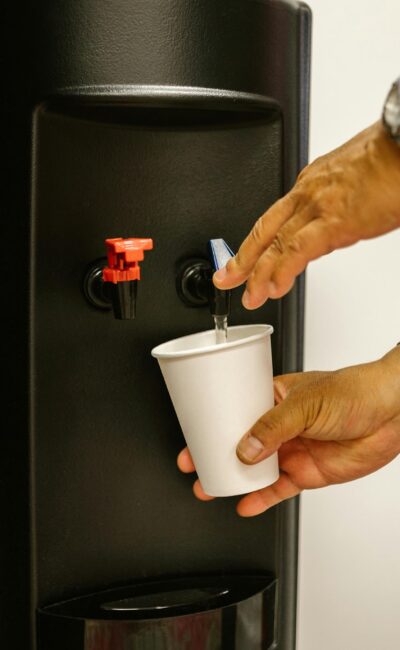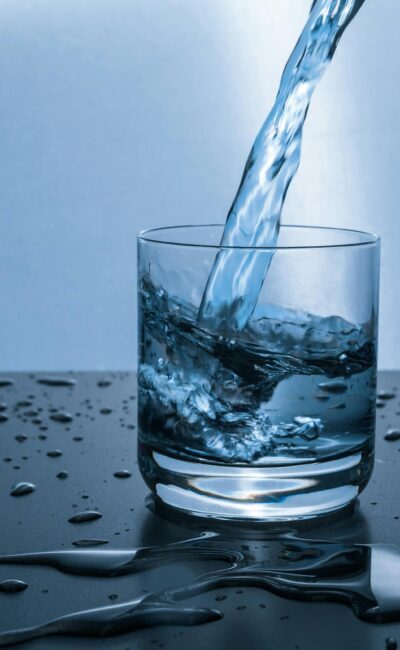The contaminants found in drinking water come from several different sources and two categories of pollution. What is nonpoint pollution versus point-source pollution? Nonpoint source pollution (NPS) is generally a result of precipitation, drainage, and/or surface runoff.
It’s often caused by rainfall or melting snow moving through the ground and making its way to your main water resource. Compared to point-source pollution that points to a single place of contamination, it can be harder to determine where exactly pollution occurred. Many states report NPS is the leading cause of water quality problems.
The U.S. Environmental Protection Agency (EPA) identifies common sources of nonpoint source pollution. These include:
- Overuse of fertilizers, herbicides, and insecticides used in agricultural industries
- Chemicals from urban runoff and energy production
- Sediment from eroding streambanks, forests, and poorly managed construction sites
- Bacteria from livestock, faulty septic systems, and pet waste
Everything that touches soil and seeps into the ground has the potential of ending up in your water supply and contributes to the overall lack of clean water for drinking. Fortunately, there are ways to prevent NPS and filter out water pollution right at the tap.
Preventing Nonpoint Source Pollution
What is nonpoint pollution in terms of preventing it in everyday use? Every community is susceptible to drinking water contaminated by nonpoint source pollutants. Agricultural and manufacturing regions that operate with high levels of chemicals are major contributors to pollution in city tap water. However, urban activity can add to urban water pollution as well. Cities with high populations of people on the roads contribute to NPS due to excessive oil, antifreeze, and gas runoff needed for automobiles.
The EPA outlines a few ways to help prevent NPS in these areas. Those in the agricultural and manufacturing industries can implement efficient disposal systems for fertilizer, pesticides, and herbicides in a safe and approved manner. They can also manage animal waste to minimize losses to water sources. Additionally, these industries can follow conservation best practices with regards to preventing soil erosion and drainage as ways to reduce water pollution. You can also avoid drinking contaminated water by getting a freestanding water dispenser which has our advanced filtration system.
Meanwhile, residents in urban environments are encouraged to keep pet waste, litter, and debris out of street gutters and drains, as these lead directly to lakes, rivers, and wetlands. Proper disposal of automotive fluids is important as well to limit the amount that ends up in sewer drains and water sources.
Also, limiting the use of lawn and garden chemicals, household detergents, and other types of toxins that can make their way into the water resource is recommended. These efforts don’t fully eliminate the problem of pollution, but it’s a helpful way to prevent NPS.
The Effects of Drinking Contaminated Water
Although it’s difficult to accurately measure NPS, city water systems are responsible for testing and treating water for safe drinking. Being aware of the kind of contaminants in your drinking water is important. There are several health effects of drinking contaminated water. It can lead to gastrointestinal illness, neurological disorders, and reproductive problems. Infants, pregnant women, and elderly folks are most susceptible to both short-term and long-term health effects. In fact, if you are pregnant and wondering if drinking tap water while pregnant is safe, we cover everything you need to know.
The Centers for Disease Control and Prevention outlines the main causes of contamination outbreaks in public water systems. Among the most recognizably found in NPS are:
- Giardia
- Copper
- Salmonella
- Hepatitis A
- E.coli
Giardia
Giardia is a microscopic parasite found in water sources that receive polluted runoff from improper animal and human waste disposal. Those who’ve been exposed may have symptoms of diarrhea and stomach or abdominal cramps.
Copper
Copper occurs naturally in the environment. However, high levels of this metal can cause nose, mouth, and eye irritation. It can also lead to vomiting and diarrhea. It’s a frequent pollutant of NPS since it attaches to soil, clay, or sand. Plus, it’s also released by natural sources including forest fires and decaying vegetation, which seep into the ground.
Salmonella
Salmonella is a bacteria often associated with raw meat or poultry. It can also be found in water due to irrigation sources from agricultural land operations. It delivers the same side effects as giardia and copper exposure, but symptoms may not appear until several days after infection.
Hepatitis A
Water contaminated with hepatitis A is dangerous because it’s very contagious and can be spread even if ingested in microscopic amounts. It’s a short-term liver infection that produces symptoms including nausea, fatigue, stomach pain, and jaundice, which can last up to two months.
E.coli
E.coli bacteria is usually linked to contaminated foods, but it can also be found in city water as well. Health effects of drinking water contaminated with E.coli range from diarrhea to urinary tract infections and respiratory illness to pneumonia.
The EPA’s National Primary Drinking Water Regulations outline legally enforceable standards and treatment techniques in an effort to protect public health. These regulations include limiting the number and amounts of microorganisms, disinfectants, and organic chemicals found in drinking water systems.
For most types of chemicals and bacteria, there is no safe level for drinking water. Unfortunately, not all cities maintain the same standards, and water quality problems can suffer.
How to Ensure Your Drinking Water Is Safe
There are a few ways to check the quality of your tap water. First, check your city’s Consumer Confidence Report (CCR). These must be created and distributed to the public on an annual basis. The CCR outlines the type and level of contaminants found in the water. It also identifies where there are higher levels present than what’s allowed by the EPA. The CCR also includes which disinfectants are used to treat water, plus any actions taken regarding ongoing issues.
Many factors can alter the results of this report in the months before a new one is issued. Increased NPS, such as heavy rainfall and increased amounts of polluted stormwater runoff, can raise the levels of contaminants in the water source. New building developments, an increased number of construction sites, and ongoing road repair can also affect your tap water. Whenever water is used or it rains, any debris and sediment is picked up from these sites and slowly make their way to drains and central water sources.
In addition to the CCR, you can request your home water be tested. For more information on how to test water quality, check out this topic on our blog. Waterborne germs can live and grow in home and office pipes, especially when water has been stagnant for an extended period of time. To protect your home from waterborne germs, it’s best to flush faucets and showerheads that haven’t been used recently. Clean and disinfect all devices that use water. Also, regularly clean and maintain water devices like portable humidifiers and Neti pots which can breed bacteria and germs.
An unpleasant odor or taste coming from water is a sign that it’s contaminated. So if you notice that your water smells bad, it’s important to take proper action. Cloudy water or water containing sediment is another key indicator to check the quality of your water. With the amount of pollution that can affect the quality of city water, the best way to ensure what you drink is safe is by using a water faucet filter.
Filtering Out Nonpoint Source Pollution
When it comes to tap water, it’s not about if there are contaminants in your water, it’s how many. Not all water systems carry the same ones or the same amount, but there’s a good chance your tap water is less than desirable to drink. Prevention and treatment methods can only go so far.
The FloWater Faucet Filter reduces or removes over 80 contaminants commonly found in tap water. This includes bacteria, toxic chemicals, viruses, and other pollutants that make it into your water. Many standard faucet filters use a single filter. Meanwhile, the FloWater Faucet Filter uses multi-stage filtration system assures that you have the cleanest, freshest drinking water possible.
It starts by removing the largest particles first, such as dirt, rust, and other solids that often end up in tap water. It moves onto eliminating the next smallest particles, including chlorine, hydrogen sulfide, and heavy metals. These elements leave behind unpleasant odors and tastes, which further reduces the quality of your water.
An advanced osmosis filter removes the microscope contaminants with a semipermeable membrane. It removes bacteria, viruses, pesticides, and other dissolved solids that come from polluted runoff water that ends up in drains and sewers. This advanced method of filtration ensures you have clean drinking water available right from your faucet. Plus, it doesn’t add to the pollution problem that single-use plastic water bottles do. Better yet, if you’re working on personal money management, this is an easy way to cut your costs.
Many have begun making the switch from using plastic water bottles to get their daily hydration. It’s less expensive to use FloWater’s Faucet Filter, and it reduces the amount of plastic waste in the environment and helps protect our natural resources. The cost and convenience add to the higher quality of water the faucet filter provides.
Tackling the problem of NPS is one that must be approached from all different angles. As long as it’s a factor, it will always be a main source of contamination. Using an at-home faucet filter is one of the best ways to maintain that the water you’re drinking daily is pure, clean, and free of pollution.
Sources:
https://www.epa.gov/nps/basic-information-about-nonpoint-source-nps-pollution
https://www.cdc.gov/healthywater/drinking/public/water_diseases.html
https://www.ncbi.nlm.nih.gov/pmc/articles/PMC5989457/
https://www.epa.gov/ground-water-and-drinking-water/national-primary-drinking-water-regulations
https://www.cdc.gov/healthywater/drinking/preventing-waterborne-germs-at-home.html




